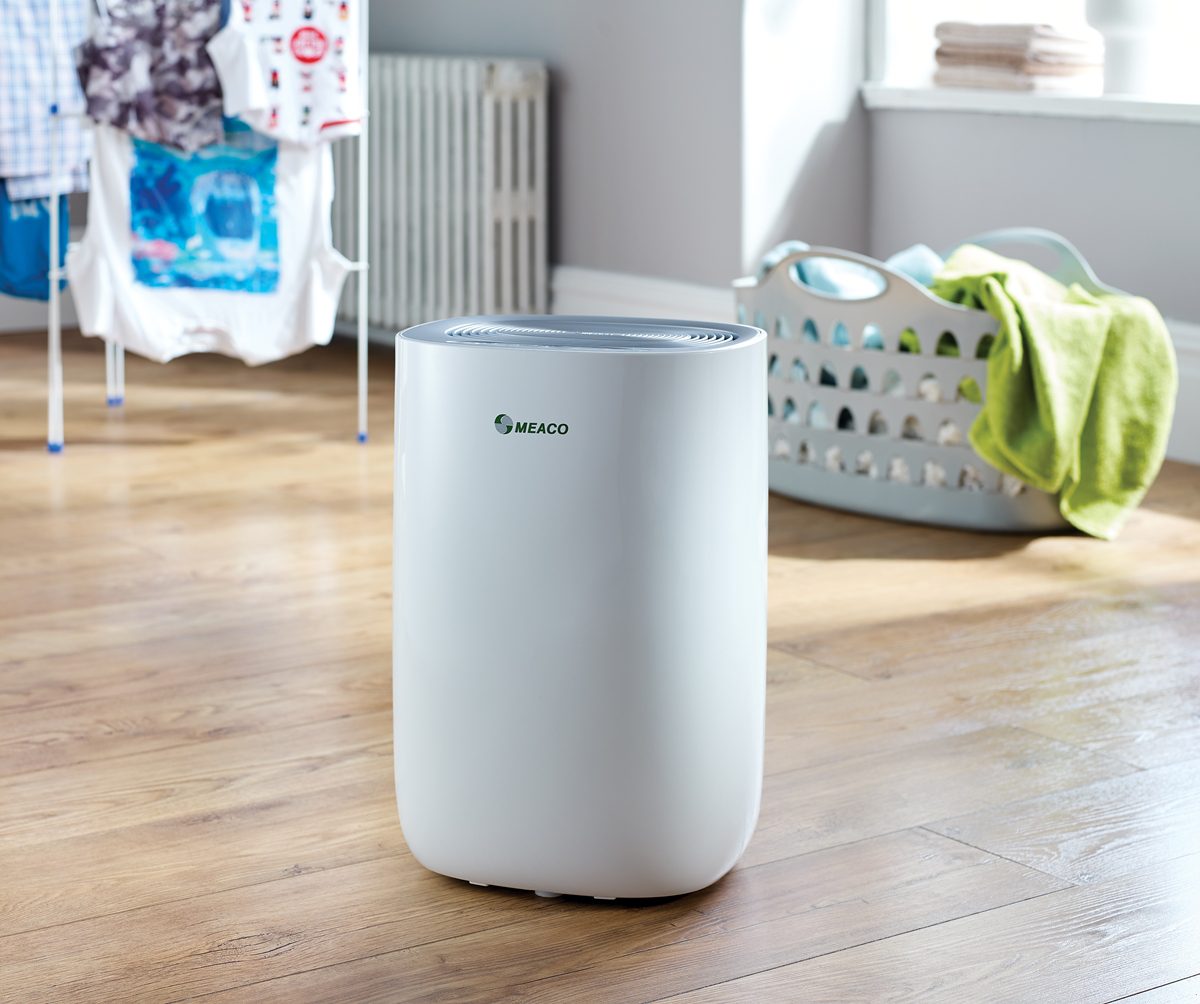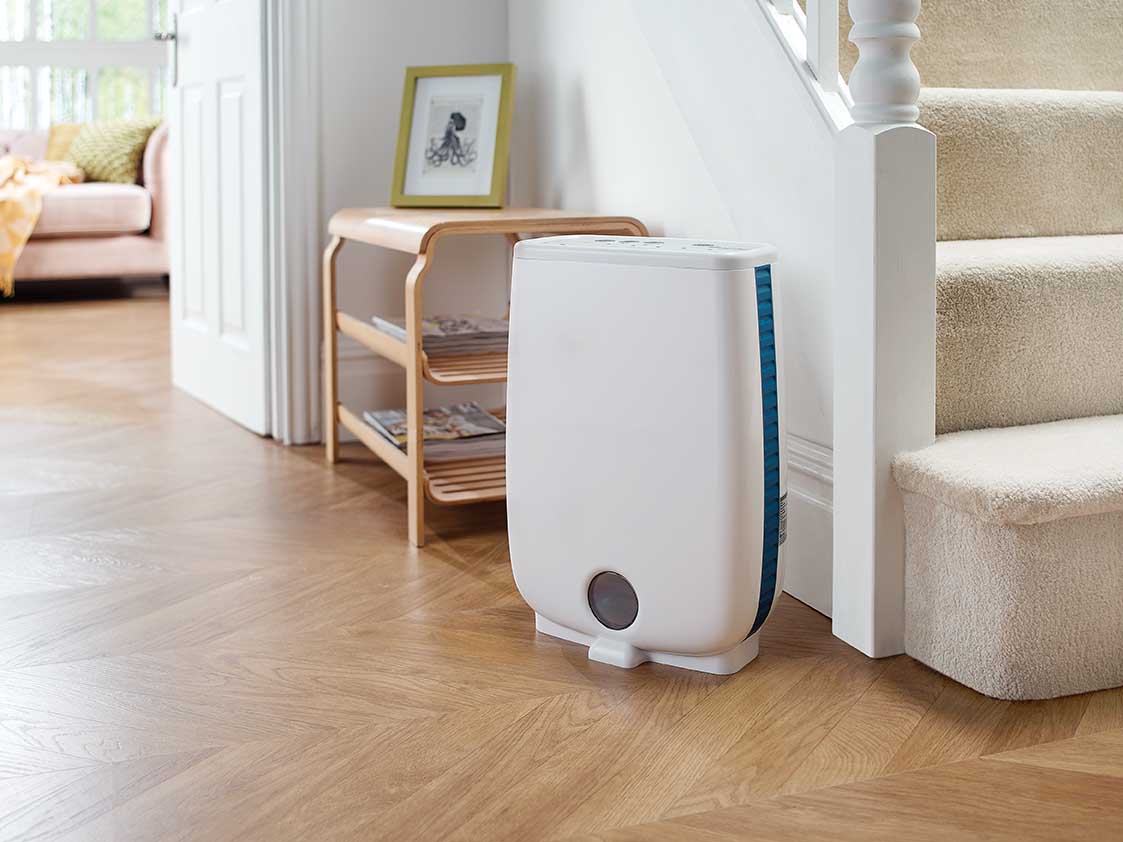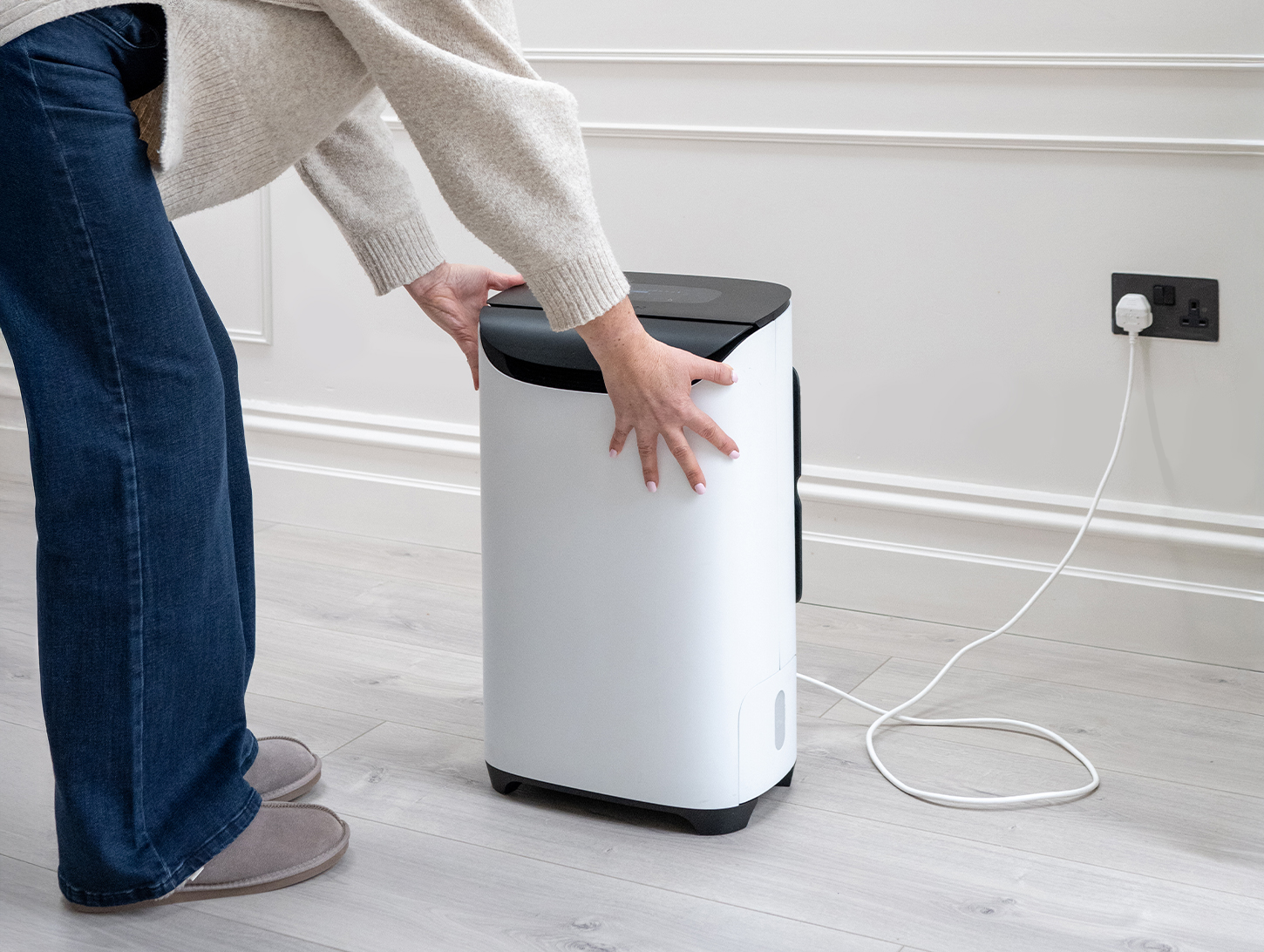The most common request that we get is for a dehumidifier for use in a flat or an apartment, more so than any other dehumidifier application.

Flats really suffer with damp and condensation problems. A dehumidifier like the MeacoDry ABC 12L can make a huge difference in just a few days.
This is because the vast majority of flats and apartments do not have room for a tumble dryer or access to an outside space where they can dry laundry; meaning laundry gets dried on a clothes horse inside. In winter, when the windows are closed and the heating is on, drying laundry on a clothes horse or radiator will contribute to causing some severe damp problems. The moisture from the clothes goes into the air and adds to the moisture that is generated daily by cooking, making tea, bathing, showering and breathing. Over the course of winter this moisture load accumulates within the flat because windows and doors are kept shut to prevent warm air from escaping and cold draughts from entering.
When there is enough of this moisture condensation forms on windows and mould grows on cold spots (usually north facing outside walls).
A lot of flats are also rented accommodation, meaning a few more factors may be contributing to damp related issues. The extractor fans may not be as well maintained, the property may have old or even unsealed windows, less care may have been taken by previous tenants around moisture retention resulting in historical issues and there may be delays in fixing broken appliances such as a flooding washing machine or leaky pipes.
Our experience tells us that flat owners and tenants would largely benefit from a dehumidifier but we don’t recommend buying any old dehumidifier, as there are surprisingly few that fit the bill.
What are the top 5 important factors to consider when choosing the best dehumidifier for your flat or apartment:
- Flats are small and therefore you do not need a dehumidifier that is too large. We recommend a 10L dehumidifier for a 1-2 bed flat, sometimes a 12L if you have a serious moisture problem or more than 2 people living in the flat.
- You also do not want a bulky dehumidifier that will take up too much space, for example, our Arete® One range can be placed against the wall, leaving you room to pass in your hallway. If you own the property or have agreed with your landlord about wall fixtures, a selection of our dehumidifiers can be wall mounted, saving you even more space.
- As the flat is small, you want a dehumidifier that is quiet so that it does not disturb you. Many of our dehumidifiers like the MeacoDry ABC 12L are Quiet Mark certified and are just 35dB.
- A Laundry Mode is essential for drying the washing indoors. Our Arete® One range of dehumidifiers has a Laundry Mode that runs for 6 hours and can be enabled by one press of a button. Once 6 hours has passed, your laundry should be dry, and the dehumidifier will turn off saving you money on unnecessary energy bills.
- Consider the cost to run. The cost to run an appliance is just as important, if not more important, than the initial purchase price. The cost to run of all our dehumidifiers is listed on their product pages. If a particular dehumidifier brand does not have their figures listed, ask them – it might save you money in the long run! Our Meaco DD8L Junior costs 9p per kWh, MeacoDry ABC 12L and MeacoDry Arete® One 10L costs just 4p per kWh to run
Three dehumidifiers that tick all of these boxes are the Meaco DD8L Junior, the Meaco DD8L and MeacoDry ABC range. The difference between the two DD8Ls is that the Junior version does not have the anti-bacterial coating on the filter or an ioniser. These two features are of interest to those that suffer from allergies. It is the fact that these dehumidifiers are specially designed desiccant dehumidifiers that make them particularly popular with flat owners and tenants. The desiccant makes them lighter and quieter than a compressor dehumidifier whilst still being faster at drying washing.

The DD8L is a great solution for handling damp and mould in a flat or apartment
We would not recommend the use of most compressor dehumidifiers in a flat, as they would be too noisy. One of the only exceptions to this would be the MeacoDry ABC range because of their exceptional build quality. Our must-have MeacoDry ABC dehumidifier (which comes in a 10L or 12L version) makes a huge difference to houses and flats that suffer from damp or condensation. This compressor dehumidifier is cheap to run at just 4p per kWh, and this unit is especially useful in smaller homes and flats because of its size and Quiet Mark award-winning operation (12L version only). Wherever you use it, you’ll find it won’t disturb work, play or sleep.
Alternatively, you may consider the MeacoDry Arete® One 10L with its quiet operation (at just 35dB) and ability to be wall mounted out of the way.
Hopefully this makes selecting a dehumidifier for your flat a lot simpler, if you still have any questions then you can call us on 01483 234900 and we’ll be happy to help.
Products featured: Meaco DD8L Junior, Meaco DD8L, MeacoDry ABC 10L, MeacoDry ABC 12L, MeacoDry Arete® One 10L







8 responses
I live in a 2 bed flat and our windows are covered in condensation with puddles on the window ledge in the mornings throughout the winter. Will an ABC 10L be sufficient enough to solve this issue?
Sean,
Thank you for your enquiry! Yes, the ABC 10L is suitable for flats and 1-2 bedroom houses, and it should effectively address your condensation issue. You can learn more on the product page. Additionally, you might be interested in our newer Arete models, which feature an improved design for convenience, including castors, a pull-up handle, and the ability to place them against a wall!
If you need any more assistance, just give us a call.
Kind regards,
Omar@Meaco.
The DD8L does not have a compressor so it is quieter than most other dehumidifiers. I am looking for a quiet dehumidifier for my studio flat and I see that the MeacoDry ‘ABC’ Range 10L is a quieter than the DD8L when the MeacoDry ‘ABC’ is run in Ultra-Quiet mode. Since writing this article in 2013 has technology moved on and made some dehumidifiers with a compressor a better option for flat owners/renters than a desiccant dehumidifier?
Nick,
In terms of noise the ABC Range is a massive leap forward for compressor dehumidifiers and has quickly become the favourite with flat owners for it’s combination of low energy consumption and low noise level. This advantage is not currently shared by other compressor manufacturers but I am sure that they will copy us over the next couple of years!
Desiccant dehumidifiers are still popular with users who want a little bit of extra heat in their property.
Chris
Hi Chris, my upstairs bedrooms have a lot of damp. So much that walls and ceiling have turned black.. How is it best to treat the area that is black, and then prevent this from happening in the future?
Adam,
Sorry to hear that. A dehumidifier will help and I would suggest using an extractor fan in the kitchen and bathroom. If you do not have extractors then put them onto your to-do list and in the meantime open the windows in the bathroom and kitchen for 15 minutes after using them. The dehumidifier will capture all of the damp in the house before it can create any damage as long as you leave the internal doors open for the air to move around.
To clean the mould there are several treatments in the DIY stores which should help.
Chris
Our corridors are getting wet at all the times and the wall is discoloration with effects of mold because of high humidity (30c-85Rh) the total area of the causing of humidity is around 8sqf.
Pls. advice us as what is of Dehumidify should buy to close this matter forever.
Thanks.
Piyal,
There are a few things that you need to think about. Firstly where is the water coming from? Is it weather, internal human activity (bathing, showering, drying laundry etc) or do you have a leak somewhere? Secondly how large is the total space and not just the corridors, is this a house or a commercial building?
Chris